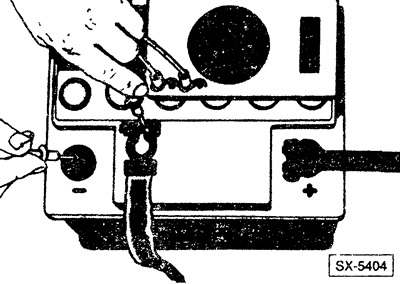Use a charged battery to test.
Disconnect the earth cable from the battery.
Attention: This erases data in the electronic memory, such as the engine fault memory or the radio code. Disconnect the battery only when the ignition is off, otherwise the control unit of the fuel injection device may fail. Before disconnecting the battery, read the instructions in sections "Radio" And "Removing and installing the battery".

Install on ammeter (with a measurement limit of 0-5 mA up to 5 A) maximum measuring range. Connect an ammeter between the negative pole of the battery and the ground wire.
Attention: The test can also be carried out using a test lamp. If, however, the lamp does not light up, a test with an ammeter should be carried out.
Turn off all consumers, turn off the clock (and all other regular customers), close the doors.
Switch measuring ranges down to the mA range until a visible indication follows (1-3mA are allowed).
Sequentially interrupt various electrical circuits by removing the fuses. If, when one of the circuits is interrupted, the indication goes to zero, the source of the malfunction should be looked for here. Defects can be rusted and dirty contacts, frayed wires, internal short circuits in units.
If no defect is found in the circuits protected by fuses, the wires should be removed sequentially from unprotected units. These are: generator, starter, ignition system.
If one of the unfused units goes to zero when disconnected, repair or replace the affected unit. In case of current leakage in the starter or ignition system, also check the ignition switch according to the electrical diagram.
Connect ground cable to battery.
If available, set the time on the clock and enter the security code into the radio.
